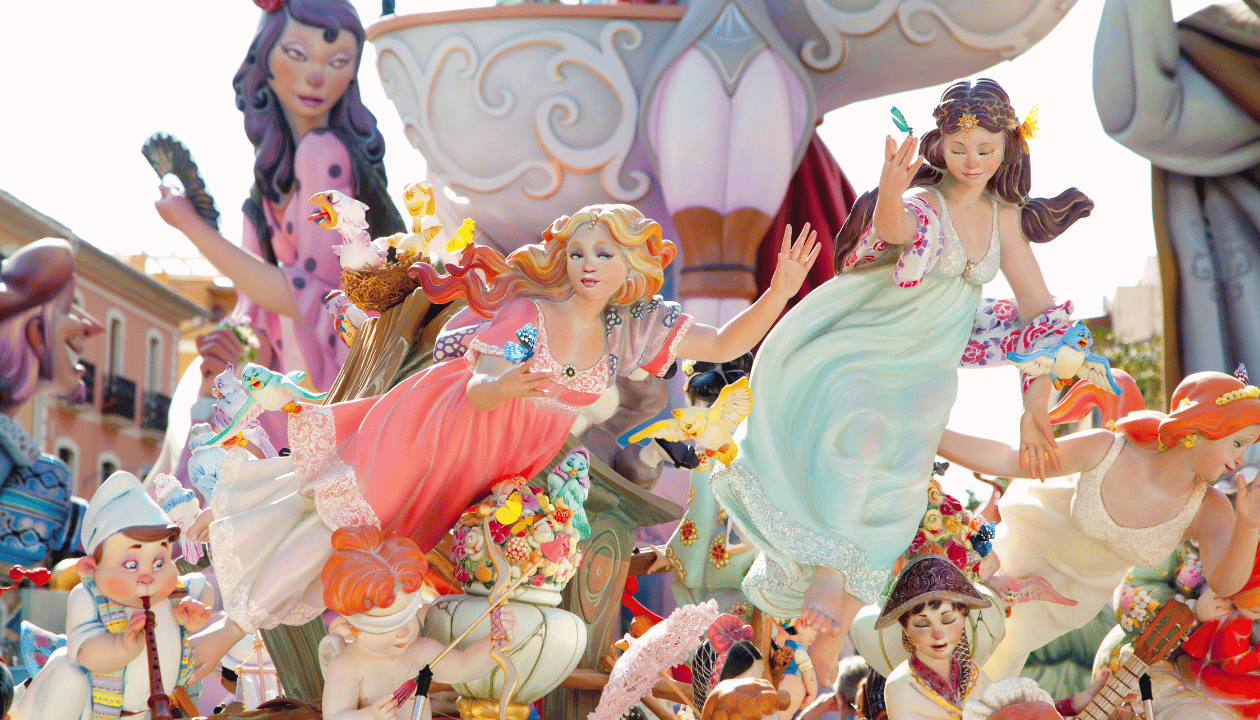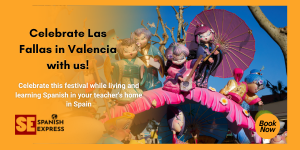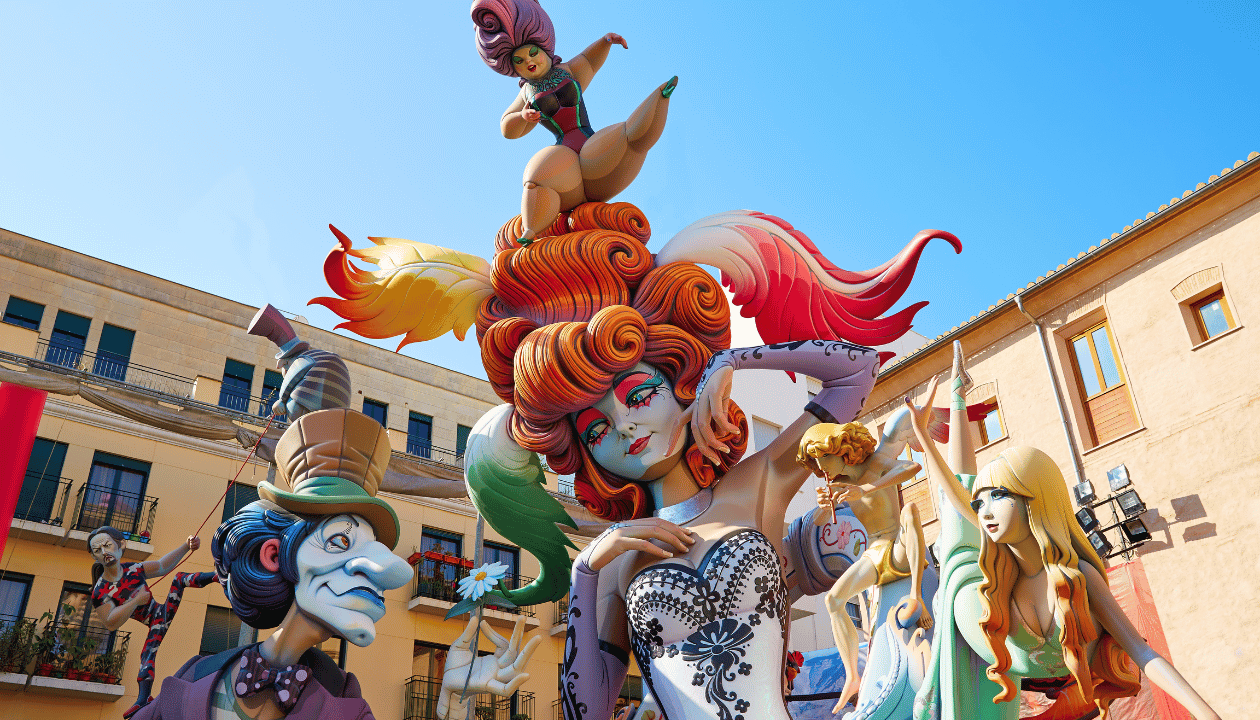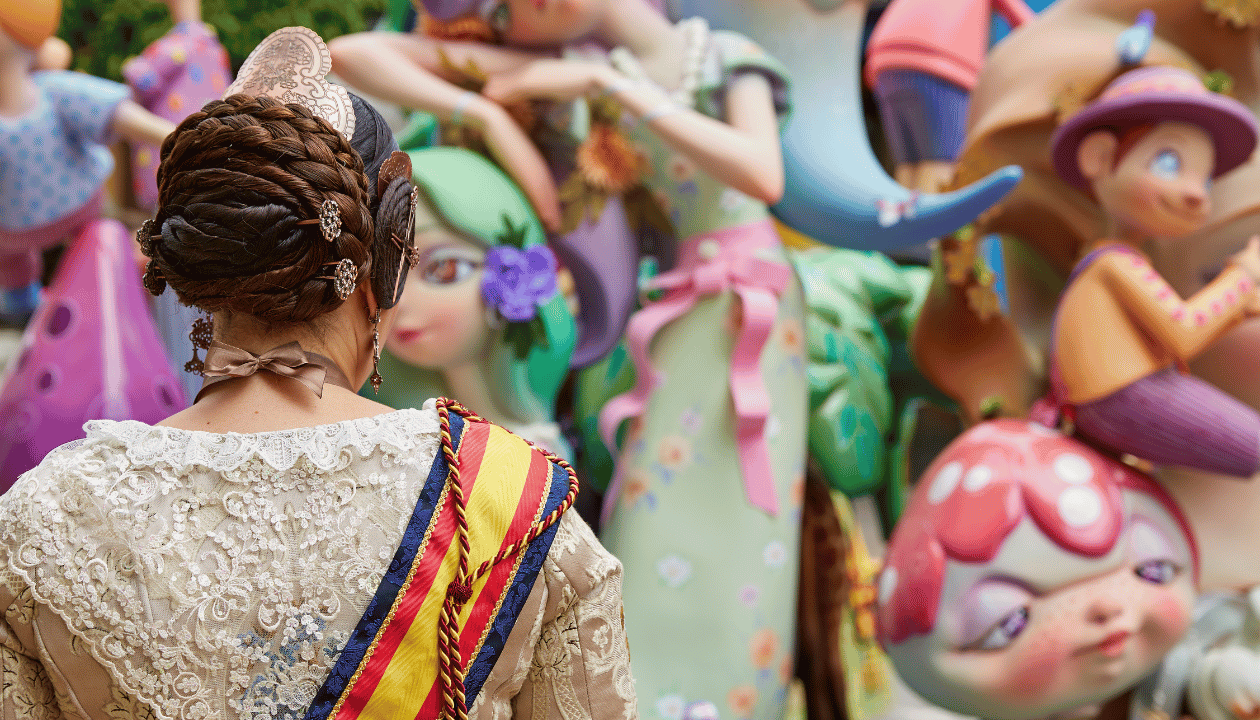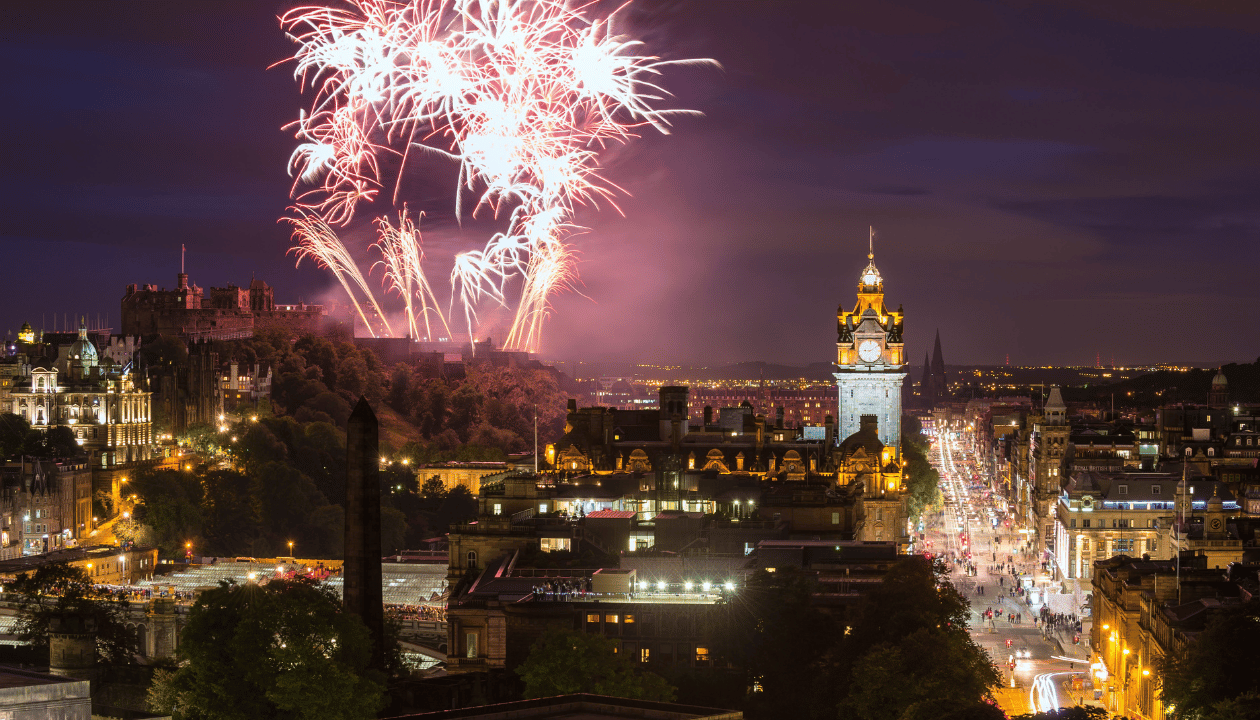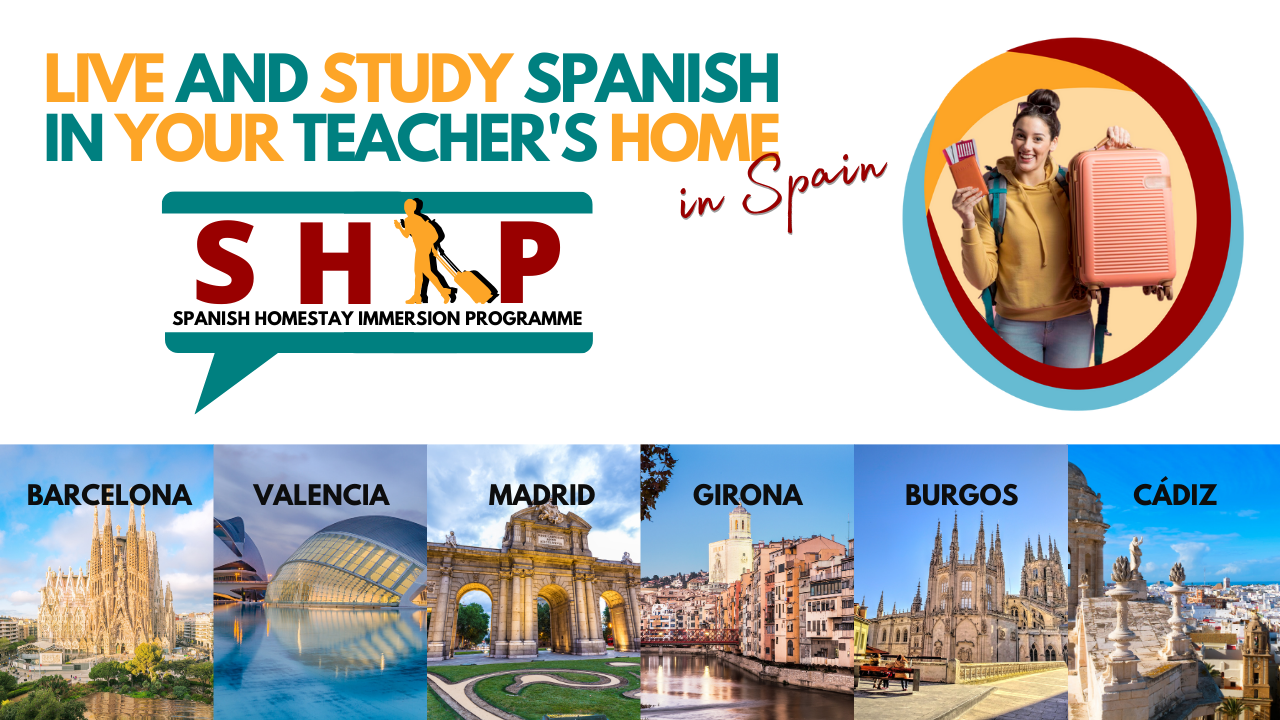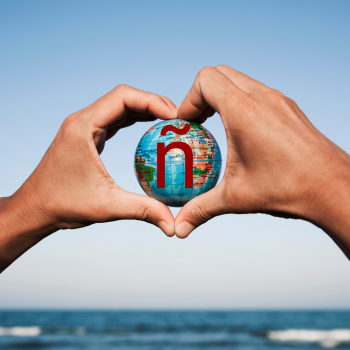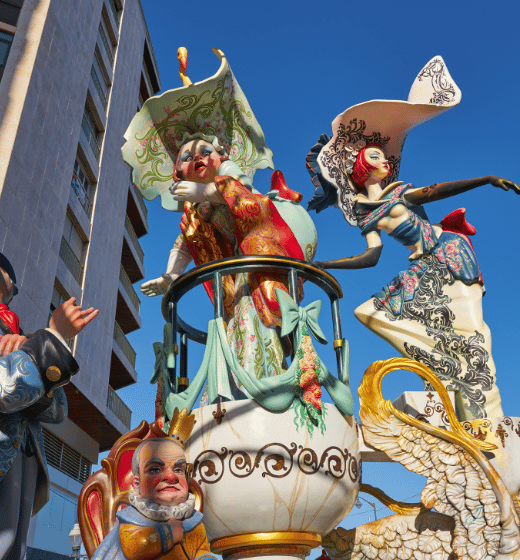

Learning Spanish requires more than just classes and regular practice. In-depth knowledge about the key aspects of the Hispanic culture, including its declared Intangible Cultural Heritage and vibrant firework displays, is an important part of the learning process.
At Spanish Express, we are committed to providing you with all the tools you need to improve your Spanish. That is why we not only give you pedagogical material but also bring you a closer look at the best that the Hispanic culture has to offer, from the satirical nature of events to the colorful Fallas Mascletà de Colores.
This time we’ll take a closer look at Las Fallas de Valencia 2024, a main attraction that marks both the spring equinox and the rich cultural heritage of humanity. Have you heard about this fun festival? If you haven’t, don’t worry, we will tell you all about its big fallas, children’s fallas, and the unique tradition of la Virgen Ofrenda de Fallas here!
Are you ready to discover more about this celebration? You are guaranteed to want to come and party with us after learning about it, from the ceremonial fire parade in the city center to the festive fireworks displays lighting up the March sky.
Las Fallas de Valencia (The Fallas Festival)
The Origins of Las Fallas
Before Valencia adopted this festivity, the Fallas were mainly recognized as a fire ritual. Within this type of ritual, flames symbolize renewal and rebirth, achieved by burning the old to give way to the new.
In the 16th century, the word “falla” was used to refer to the fire that was made on the ground at the center of a gathering or party, which usually served as lighting.
Over time, this word changed its meaning, as the fire started being made with unusable furniture and junk that carpenters burned in front of their workshops, on the public streets.
Thus, the origin of the Fallas dates back to the ancient tradition of the carpenters, who burned the wooden contraptions they used to raise the torches that illuminated them in winter while they worked.
This act of burning wood was carried out on the eve of the feast of their patron saint, Saint Joseph.
Evolution and Cultural Impact
In the 18th century, the custom of burning dolls or “ninots” began to be registered in some localities of Valencia. These represented characters that people intended to criticise or censure for their wrongful actions or words.
However, it was in the 19th century when the name “Falla” was also used in Valencia to celebrate this festivity. The citizens took an artistic and satirical monument to the street to burn it the night before Saint Joseph’s Day.
The festival was celebrated in different areas across the city, being called “Las Fallas de Valencia” in the plural to honor the saint.
Each artistic monument or “falla” bears the name of the most representative neighborhood within that city. There are different categories of fallas that compete with each other for various different prizes.
The monument of each falla has one, two, or three gigantic figures that can measure up to twenty meters in height, made of cardboard, wood, and paint. Their figures represent current social and political issues either ironically or critically, but always with a lot of humor.
On March 15 the Fallas are planted, and it is finally the day of the festivity!
The protagonists of the festivities are the music, the smell of gunpowder, and the public participation. These elements have all given the festival its well-deserved fame all over the world. Everyone wants to come to celebrate Las Fallas de Valencia!
The music, played by bands, accompanies the falleros (Valencians dressed in regional costumes) to events such as the Offering of Flowers to the Virgen de Los Desamparados, on March 17 and 18.
The mascletàs are fired in the Town Hall square every day at two o’clock in the afternoon, along with fireworks over the castles on the night of March 18.
On March 19 the celebration ends by setting fire to all the Fallas monuments at midnight on March 18.
Las Fallas de Valencia has been declared a Festival of International Tourist Interest and recognized by UNESCO as an “Intangible Heritage of Humanity”.
The magnitude of this celebration translates into an unparalleled explosion of culture. The colors, the music, and the joy of the people are the main attractions of this celebration, which closes in style with an unforgettable flame show.
Let’s test your knowledge with this interactive activity
Come to Valencia and celebrate Fallas with us!
If you want to experience this celebration in person, make your dream a reality by becoming part of our Spanish Homestay Immersion Program (SHIP)!
At Spanish Express, we have taken the utmost care to combine fun and learning into a one-week program to make sure you have the best experience while learning Spanish.
Our SHIP can now bring you to Las Fallas de Valencia, as we have set up a program in this beautiful city. Not only will you get to experience this unforgettable celebration in person, but you will also be learning Spanish in the process.
Get to know the culture of Spain in person while constantly improving your Spanish. Our methodology combines the best of both worlds.
In addition, we have other destinations available:
The best thing about this program is that you can live and study Spanish in your teacher’s home!
If you want to explore Spain with us and leave with invaluable knowledge of the language, the Spanish Express SHIP has opened its doors to all knowledge-hungry travelers. We are waiting for you!
FAQs
Do you need tickets for Las Fallas?
No, you don’t need tickets to enjoy Las Fallas. It’s a street festival open to everyone. You can join the fun in various parts of Valencia without paying for access. Some specific events might have fees, but generally, the celebration is free to attend.
What is the festival in Valencia March 2024?
In March 2024, Valencia is hosting the Las Fallas festival. It’s a vibrant event filled with fireworks, parades, and sculptures that are set on fire. The festival is famous worldwide for its lively atmosphere and unique traditions.
Is it worth it to go to Las Fallas?
Absolutely, going to Las Fallas is a memorable experience. It’s not just about the fires; it’s a cultural immersion where you enjoy music, traditional costumes, and the local community’s warmth. The festival offers something for everyone, making it a must-visit event.
How many days is Las Fallas de Valencia?
Las Fallas de Valencia spans over several days, officially starting on March 15 and ending on March 19. During these days, the city is alive with continuous celebrations, day and night, leading up to the grand finale of burning the fallas sculptures.
Why is Las Fallas de Valencia celebrated?
Las Fallas de Valencia is a vibrant celebration that marks the arrival of spring with fireworks, parades, and the burning of ninots. It’s a time when the city’s streets are alive with color and sound, highlighting Valencia’s rich traditions and its status as a UNESCO Intangible Cultural Heritage site.
What distinguishes the Fallas of Valencia?
The Fallas of Valencia stands out for their unique blend of art, satire, and pyrotechnics. From the artistic ninots that fill the city to the spectacular La Nit del Foc fireworks show, this festival combines tradition with creativity, culminating in the symbolic burning of the Fallas, known as La Cremà.
What are the key events of Las Fallas?
Las Fallas is characterized by a series of events that transform Valencia, including the daily Mascletà de Colores at City Hall Square, the artistic Ninot Exhibition, and the grand finale, La Cremà. Throughout Fallas Week, the city buzzes with activities, from fire parades to the offering of flowers in Plaza de la Virgen.
What experiences does Plaza del Ayuntamiento offer during Las Fallas?
At Plaza del Ayuntamiento, visitors can witness the awe-inspiring Fallas Mascletà de Colores, a daytime fireworks display that fills the sky with color and sound. This square also hosts the Ninot Exhibition, where visitors can see the intricate sculptures before they are burned, and the Cavalcada del Foc, a fiery parade.
What special traditions are observed in Plaza de la Virgen for Las Fallas?
Plaza de la Virgen becomes the heart of Las Fallas’ religious customs, hosting the emotional Flower Offering to the Virgin Mary. This ceremony sees thousands bring flowers to create a stunning tapestry, symbolizing devotion and community. The square’s historical and cultural significance is further highlighted during this vibrant festival.

